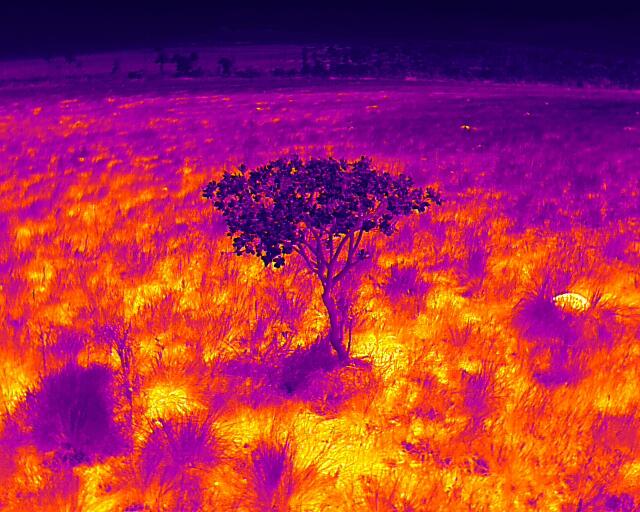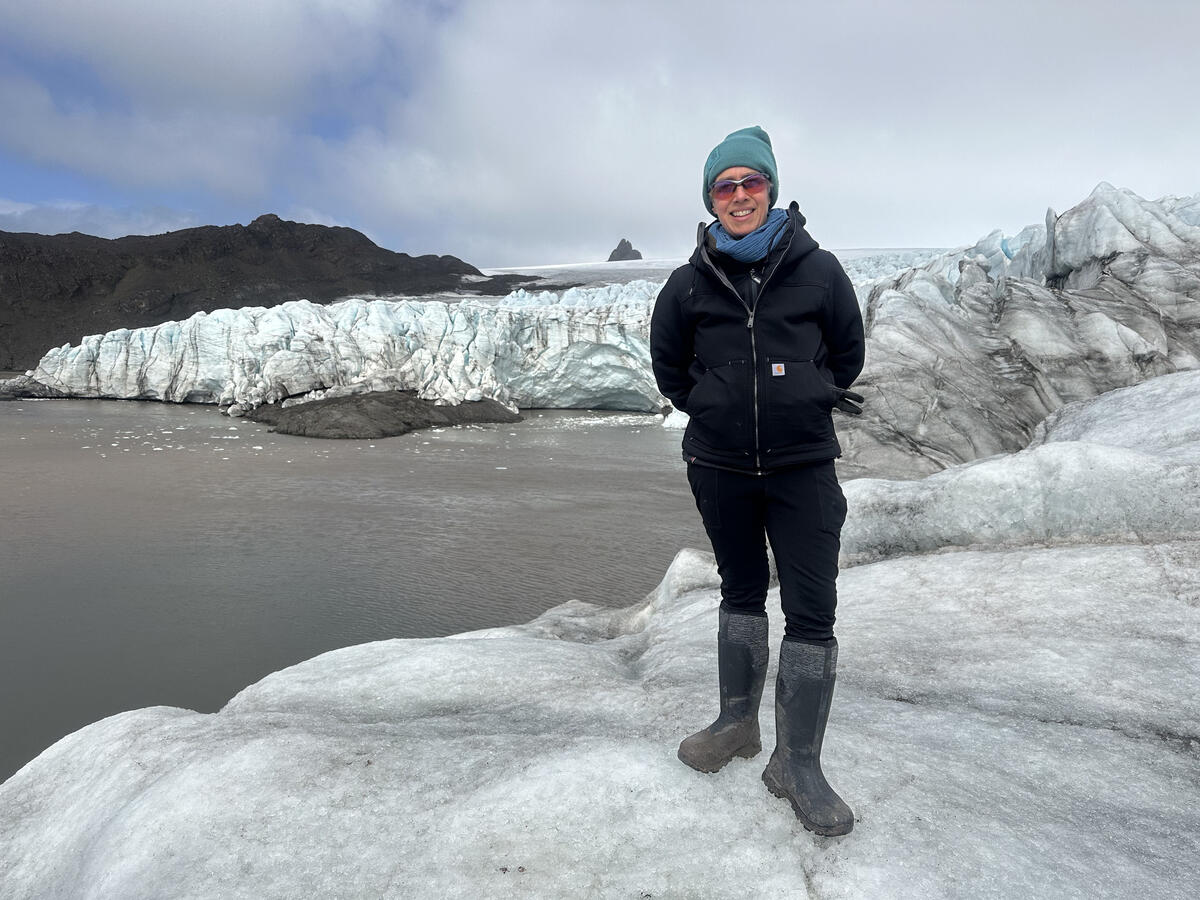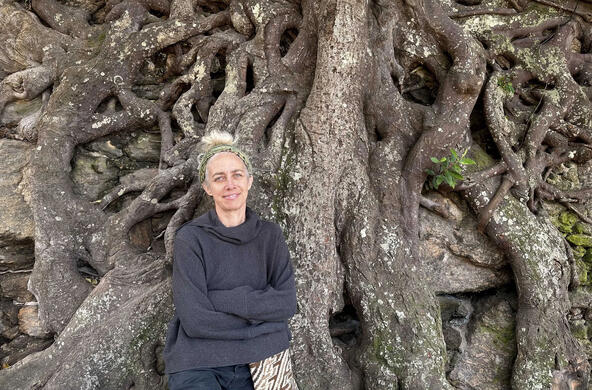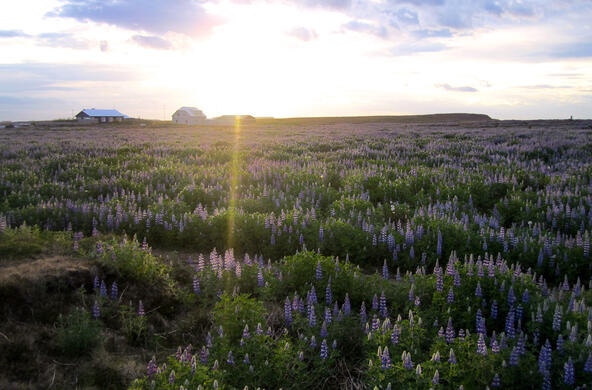Cary Institute of Ecosystem Studies recently welcomed senior scientist Amy Zanne. An ecologist and evolutionary biologist, Zanne comes to Cary from the University of Miami.
Zanne is working to refine our understanding of how carbon moves through forests, savannas, grasslands, mountains, steppes, and polar deserts. She examines the fate of carbon stored in plants, including dead wood, and how factors such as temperature, moisture, fungi, termites, and differences in construction influence carbon emissions as plants decompose.
“In a lot of what I do, the currency is carbon,” Zanne explains. By measuring the flow of carbon into and out of ecosystems, her careful carbon accounting is essential for generating accurate projections of climate change and its consequences.
Q: What are you working on right now?
Two of my newest projects are looking at carbon dynamics at ecosystem boundaries. We don't know much about how most ecosystems take in and release carbon, and what's particularly understudied are these places of intersections, where different ecosystems meet.
For example, we’re studying seasonal wetlands in the Brazilian Cerrado. The Cerrado is best known for savannas but they have lots of other ecosystems, including seasonal wetlands that connect ever-wet peatlands with dry grasslands. Because the Cerrado floods intermittently through the year, there are concerns that their stored carbon could be lost as methane, a potent greenhouse gas. We’re trying to measure what’s going on with the carbon, and mapping the size of these boundary areas, to better understand the scale of their impacts on the carbon cycle. We also want to find out how the carbon balance of these ecosystems may shift as they get hotter and drier under climate change.
Some of our work is already showing that these temporarily flooded systems in Brazil act differently than the everwet peatlands. We have to measure their processes to see how they differ, because we can’t begin to predict how they will work in the future if we don't understand how they function today. This is a five-year project supported by the National Science Foundation.

I’m also building up a new project in Chile and Antarctica, to look in high elevations and latitudes in the Southern Hemisphere at how shifts in the freeze-thaw cycle and loss of snowpack, caused by climate change, are affecting the soil’s release of carbon dioxide and methane. We think that as these ecosystems shift from frozen to thawed, they release these greenhouse gases. We have sensors set up for long-term monitoring in Antarctica, Punta Arenas and Cape Horn in Patagonia, and the Andes. We’re working with collaborators to add more sites across Chile and Antarctica.
Q: What are some highlights of your work that you’re most proud of?
I was trained as a botanist, and my PhD work was about understanding what traits allow seedlings to grow in different environments in Ugandan forests. From there, during my postdocs, I got interested in how differences in plant structure affect things like how water flows through the plant. I built a massive database of plant traits that allowed us to ask questions such as, what traits did plants evolve to handle freezing conditions? That turned into a paper in Nature.
The work on plant construction for life led me to think about how differences in construction influence processes after death — like how carbon is stored and released. My lab has helped unravel how temperature, moisture, fungi, and termites impact the carbon dynamics of wood decomposition. We found that different players can lead to more carbon going below ground or being released to the atmosphere. Another important finding, which we published in Science, was that decomposition by termites should ramp up as global temperatures increase. This means carbon will be more quickly returned into the carbon cycle (including the atmosphere), rather than being stored for long periods in dead wood. My team and I continue to investigate questions around the decomposition of dead wood.
Q: What excites you about being a scientist?
I get excited about being curious and asking questions. A lot of times, these questions mean that I'm pushing myself outside of my comfort zone, and it’s led me in a lot of interesting directions. I started out as a botanist understanding plants — where they were in the landscape, and how they work to, say, move water. But then I started thinking about plants’ afterlife, and wondering, how do they store carbon after they die? That led me to try to understand who's doing the decomposition. For a while, everybody in my group was a mycologist studying fungi, even though I was never trained to study them. More recently, we started looking at termites, too. I love that science lets you just be curious and wonder. That’s something I think we all do as kids, but to be able to continue that as an adult, and be paid to do it, is a magical thing.

Q: Why did you choose to work at Cary?
I love the environment that Cary fosters for creative and collaborative science, with a lot of flexibility. Collaboration has always been an important part of my research. Working with people who have different views, ask different questions, and have different ways of answering those questions excites me and helps me think outside my box.
Q: What’s your laboratory or field site like?
I realized early in my career that I’m very bad at bench science, such as pipetting, and that such bench work was just not for me. If I have to do something repetitive, I'd rather be outside than inside.
My field research sites are largely international. For about 15 years, I focused on Australian ecosystems, and I'm continuing to work there with my postdoc and graduate student. Now, during this interview, here I am in Chile and Antarctica, after which I'm jumping over to Brazil. These ecosystems are each different, but I love seeing the parallels in how they all manage to achieve the same processes, such as cycling carbon. It’s a lot like when you travel to a different country and the light fixtures are in different places than you’re used to, or the toilet flushes differently. It helps you see beyond your usual and realize that the world can work in lots of different ways, both biologically and culturally.
With these travels, I also get to enjoy the tastes and smells and languages of many different places. It’s fun to taste the local fruits and vegetables, and I'm always collecting hot sauces. In Chile, for example, they use merkén, and Brazil has tucupi, which is fermented cassava that tastes kind of like a fermented passion fruit with hot spice.
Q: Sounds amazing! But what are some of the challenges you face in this line of work?
Unlike a laboratory, which is a controlled environment, field ecology can be somewhat wild and untamed. When I was doing my PhD, I spent all this time collecting seeds and growing seedlings to put out in a grasslands experiment, to measure competition between different plant species. I did all this hard work, and then after six months, elephants came in and destroyed the whole thing. Field ecologists need a certain amount of resilience, and you have to figure out how to tell the story that maybe isn't the one you planned, but it's the story you have.
Q: What do you like to do during your downtime?
I love being outside. One of my favorite things right now is that I get to walk to work. As I’m walking over the Canoe Hills, I can see the changing phenology — what's flowering, what's fruiting, who has leaves, and things like that.
If you go for a walk with me, you'll walk really slowly because I'm identifying the plants and fungi as I go. That's part of my downtime joy, as well as part of my work.







